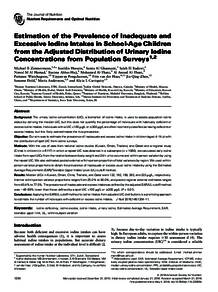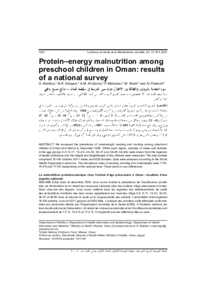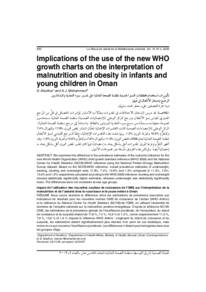Document
Estimation of the prevalence of inadequate and excessive iodine intakes in school-age children from the adjusted distribution of urinary iodine concentrations from population surveys.
Identifier
DOI: 10.3945/jn.115.229005
Contributors
Hussein, Izzeldin., Author
Al-Ghannamiyah, Samia., Author
El-Badawi, Salah., Author
Al-Hamad, Nawal M., Author
Hajj, Basima Abbas., Author
Al-Thani, Mohamed., Author
Al-Thani, Al Anoud., Author
Winichagoon, Pattanee., Author
Pongcharoen, Tippawan., Author
Haar, Frits van der., Author
Qing-Zhen, Jia., Author
Dold, Susanne., Author
Andersson, Maria., Author
Carriquiry, Alicia L., Author
Publisher
American Society for Nutrition.
Gregorian
2016-05
Language
English
Subject
English abstract
Background: The urinary iodine concentration (UIC), a biomarker of iodine intake, is used to assess population iodine status by deriving the median UIC, but this does not quantify the percentage of individuals with habitually deficient or excess iodine intakes. Individuals with a UIC <100 μg/L or ≥300 μg/L are often incorrectly classified as having deficient or excess intakes, but this likely overestimates the true prevalence. Objective: Our aim was to estimate the prevalence of inadequate and excess iodine intake in children (aged 4-14 y) with the distribution of spot UIC from iodine surveys. Methods: With the use of data from national iodine studies (Kuwait, Oman, Thailand, and Qatar) and a regional study (China) in children (n = 6117) in which a repeat UIC was obtained in a subsample (n = 1060), we calculated daily iodine intake from spot UICs from the relation between body weight and 24-h urine volume and within-person variation by using the repeat UIC. We also estimated pooled external within-person proportion of total variances by region. We used withinperson variance proportions to obtain the prevalence of inadequate or excess usual iodine intake by using the Estimated Average Requirement (EAR)/Tolerable Upper Intake Level (UL) cutoffmethod. Results: Median UICs in Kuwait, Oman, China, Thailand, and Qatar were 132, 192, 199, 262, and 333 μg/L, respectively. Internal within-person variance proportions ranged from 25.0% to 80.0%, and pooled regional external estimates ranged from 40.4% to 77.5%. The prevalence of inadequate and excess intakes as defined by the adjusted EAR/UL cutoffmethod was ;45-99% lower than those defined by a spot UIC <100 μg/L or ≥300 μg/L (P < 0.01). Conclusions: Applying the EAR/UL cutoffmethod to iodine intakes from adjusted UIC distributions is a promising approach to estimate the number of individuals with deficient or excess iodine intakes.
Member of
ISSN
0022-3166
Resource URL
Category
Journal articles



